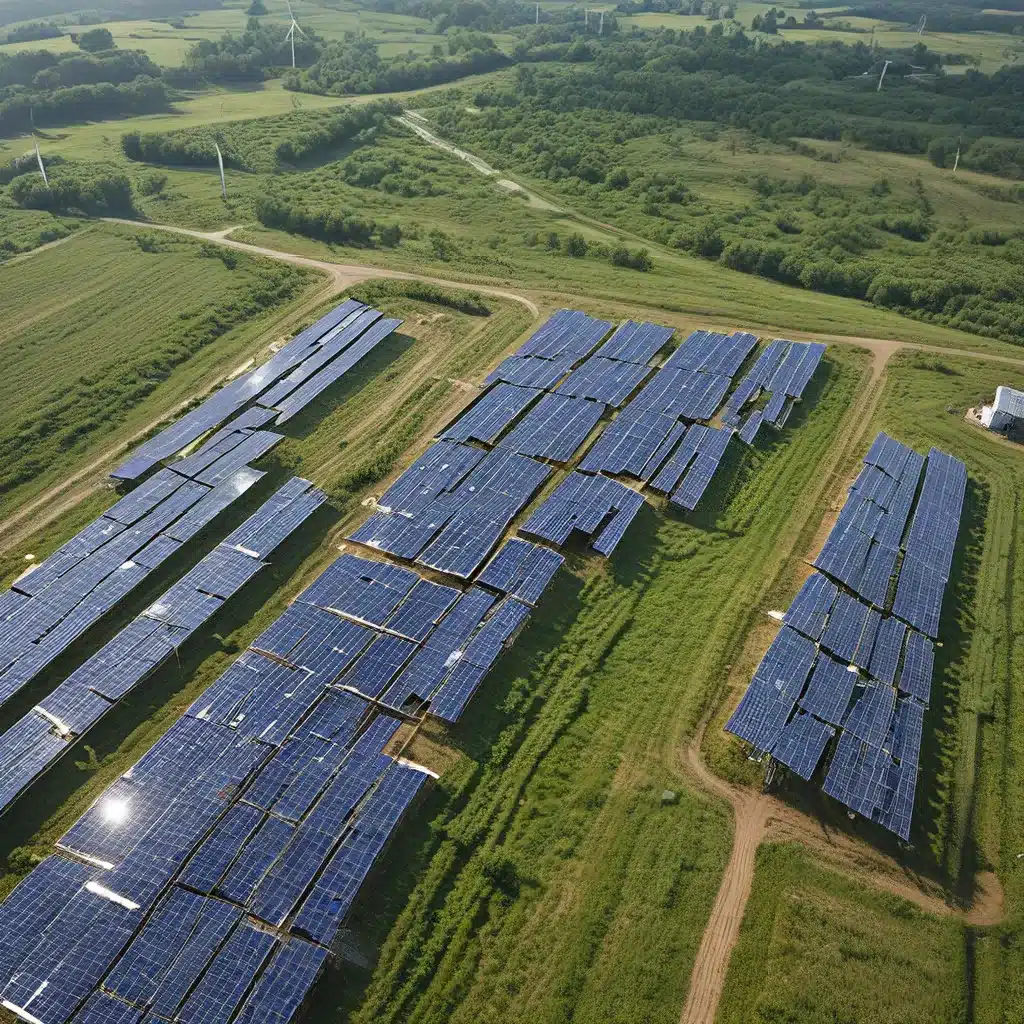
As someone who’s passionate about sustainability and the environment, I’ve always been fascinated by the world of renewable energy certificates (RECs). It’s a complex and ever-evolving landscape, with a myriad of policies, regulations, and market dynamics that can seem daunting at first glance. But fear not, my fellow eco-warriors – I’m here to guide you through the ins and outs of this fascinating topic.
Demystifying Renewable Energy Certificates
Let’s start with the basics. Renewable energy certificates (or RECs, as they’re commonly known) are a way for individuals and organizations to support the growth of renewable energy sources, even if they don’t have the means to install solar panels or wind turbines themselves. When a renewable energy facility generates one megawatt-hour (MWh) of electricity, it also generates one REC. These RECs can then be sold to companies or individuals who want to claim the environmental benefits of that renewable energy.
It’s kind of like buying a carbon offset, but instead of offsetting your emissions, you’re offsetting your electricity usage with clean, renewable energy. Pretty cool, right? But where do these RECs come from, and how do they fit into the broader renewable energy landscape? Buckle up, because we’re about to dive deep.
The REC Ecosystem: Producers, Buyers, and Regulators
The REC ecosystem is made up of three key players: producers, buyers, and regulators.
Producers are the folks who actually generate the renewable energy – think solar, wind, hydroelectric, and geothermal power plants. They’re the ones who create the RECs and sell them to the market.
Buyers, on the other hand, are the individuals, businesses, and organizations who purchase these RECs to offset their own energy use or to make claims about their commitment to sustainability. This could be anything from a large corporation looking to green its operations to a homeowner who wants to power their house with clean energy.
And then there are the regulators – the government agencies and policymakers who set the rules and guidelines for the REC market. They’re the ones who determine things like REC eligibility, pricing, and trading.
It’s a delicate balance, to be sure, with each player trying to navigate their own interests and priorities. But that’s where the real magic happens – when these different forces come together to drive the transition to a more sustainable energy future.
The Policy Landscape: Navigating the Complexities
Now, let’s talk about the policy landscape surrounding RECs. This is where things can get a little… well, complex. You see, every state (and sometimes even individual utilities) has its own set of rules and regulations when it comes to RECs. And these policies are constantly evolving, with new legislation and market changes happening all the time.
For example, some states have renewable portfolio standards (RPS), which require a certain percentage of a utility’s electricity to come from renewable sources. RECs are often used to help utilities meet these targets. Other states have voluntary REC markets, where individuals and businesses can purchase RECs to offset their own energy use or to make sustainability claims.
And then there are the federal policies that come into play, like the Production Tax Credit and Investment Tax Credit, which provide financial incentives for the production and development of renewable energy. These policies can have a big impact on the REC market, as they can influence the supply and demand of RECs.
It’s a lot to keep track of, I know. But the good news is that there are resources and tools available to help you navigate this complex landscape. Organizations like the Firewinder and the Center for Resource Solutions offer guidance and support for individuals and businesses looking to navigate the world of RECs.
The Future of RECs: Trends and Innovations
So, where is the REC market headed in the future? Well, as you might expect, it’s a constantly evolving landscape. We’re seeing a few key trends emerge:
-
Increased Corporate Demand: More and more businesses are recognizing the importance of sustainability and are turning to RECs as a way to meet their renewable energy goals. This is driving up demand and putting pressure on policymakers to ensure the REC market is transparent and accessible.
-
Blockchain Technology: Some experts believe that blockchain technology could revolutionize the REC market, making it more secure, transparent, and efficient. By using blockchain to track and trade RECs, we could see a more streamlined and tamper-proof system.
-
Renewable Energy Insurance: Another interesting development is the rise of renewable energy insurance products, which can help mitigate the risks associated with REC ownership and trading. This could make the market more attractive to a wider range of participants.
-
Integrated Energy Solutions: As the renewable energy landscape continues to evolve, we’re also seeing the emergence of integrated energy solutions that combine RECs with other tools like energy storage, demand response, and distributed generation. This can help create a more holistic and resilient energy system.
Of course, these are just a few of the trends and innovations we’re seeing in the REC market. The truth is, the future is likely to be full of surprises – both challenges and opportunities – as we continue to navigate the complex and ever-changing policy landscape.
Embracing the REC Journey
At the end of the day, renewable energy certificates are a powerful tool in the fight against climate change. They allow us to support the growth of renewable energy, even if we can’t install solar panels or wind turbines ourselves. And as the policy landscape continues to evolve, it’s crucial that we stay informed and engaged, so that we can make the most of this exciting and rapidly changing market.
So, what are you waiting for? Dive in, explore the resources, and start your own REC journey. Who knows – you might just discover a new passion for sustainable energy, and maybe even find a way to make a difference in the process. It’s an adventure worth taking, my friends, so let’s get started!

